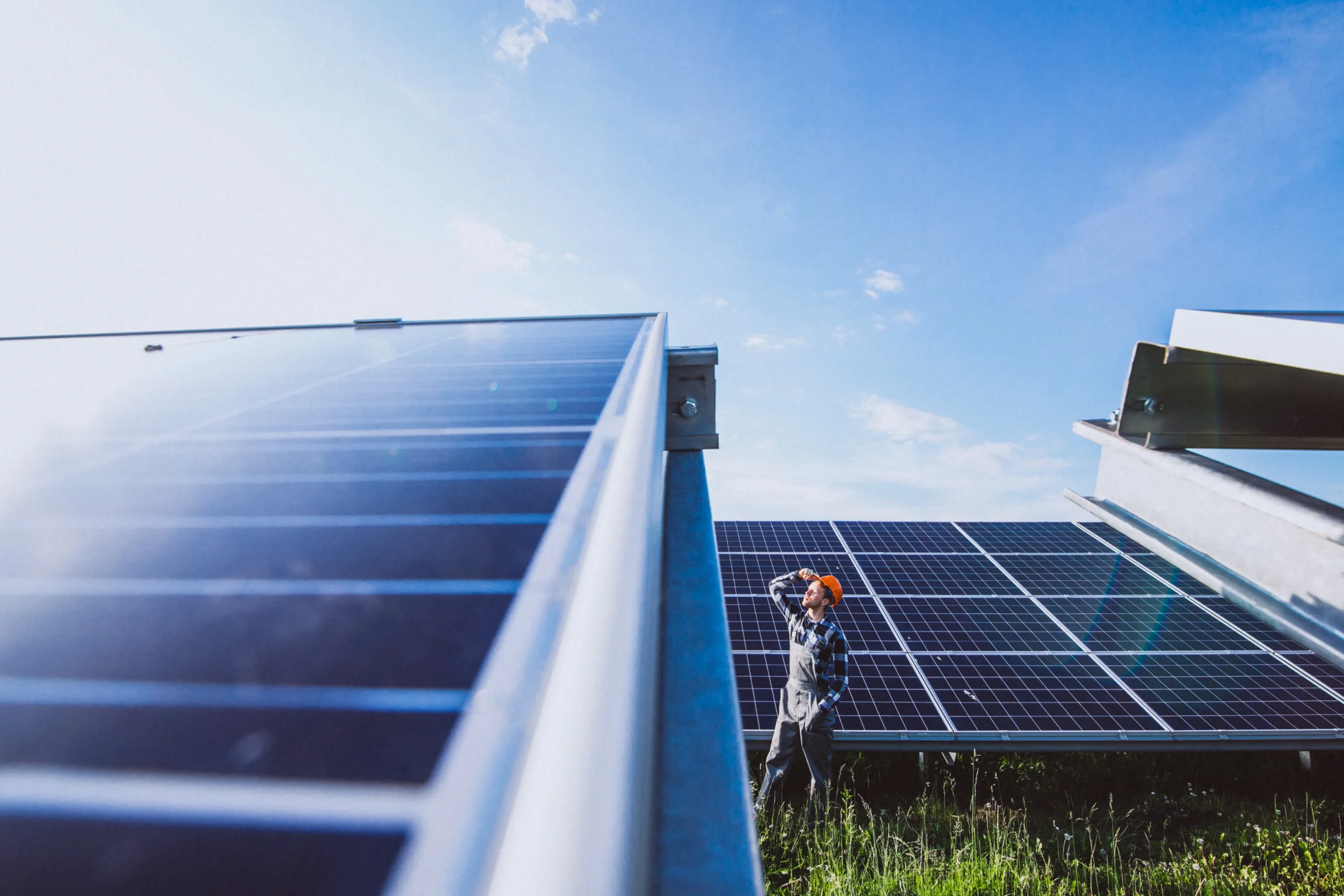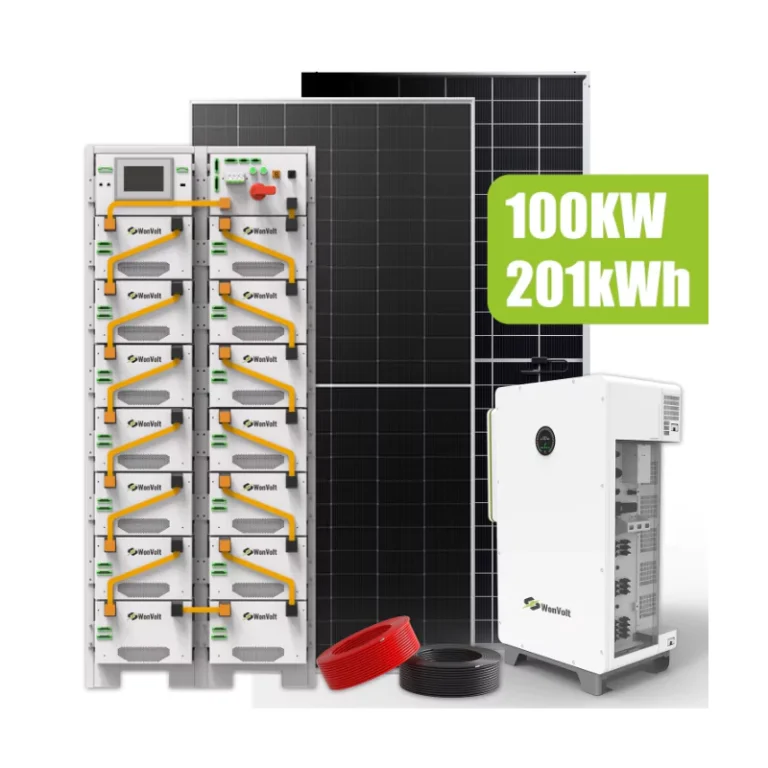Solární energie je stále populárnější pro zelenou energii v továrnách a velkých podnikech. Je to nejlepší volba pro čistou energii. Ale solární panely fungují nejlépe s jasným slunečním světlem. Co se stane, když je oblačné, stínové nebo zamračené? Dokážou ještě získat moc? Je to velká věc pro průmyslové systémy Pojďme prozkoumat, jak fungují solární panely v různých světlech, chladnou technologii, která jim pomáhá zářit v temných podmínkách, a snadné tipy, jak udržet jejich skvělou práci v továrnách.

Pochopení funkčnosti solárních panelů
V srdci každého solární panel Je to fotovoltaická (PV) buňka. Přeměňuje sluneční světlo na elektřinu. Tak to funguje: sluneční světlo zasahuje fotovoltaické buňky. Pohybuje se elektrony. To vytváří elektrický proud. Jasné sluneční světlo je nejlepší pro vytváření hodně energie. Ale solární panely mohou stále pracovat s nepřímým nebo rozptýleným světlem.
Množství energie závisí na tom, jak silné a jasné je světlo. Přímé slunce je úžasné pro maximální energii. Ale i v oblačných dnech nebo ve stínu, panely udělat nějakou sílu. Jen ne tolik. Pro továrny to záleží, protože potřeby energie se mohou měnit s počasím.
Výkon solárních panelů při slabém osvětlení
Dopad oblačnosti a oblačnosti
Oblačné dny zkrátit přímé sluneční světlo. Ale solární panely stále dokáží zachytit rozptýlené světlo. V průměru pracují při 10 až 60 % normálního výkonu, když je oblačné. Záleží na tom, jak silné jsou mraky. Hlubší mraky blokují více světla.
Ve velkých továrních systémech to může znamenat méně energie. Zvláště v obrovských solárních farmách, které potřebují stabilní slunce. Ale novější panely, jako jsou ty s polořezanými buňkami nebo bifaciální technologií, jsou vyrobeny tak, aby zachytily více světla. I když to není dokonalé.
Výkon při dešti a sněhu
Dešťové mraky blokují sluneční světlo. To snižuje výrobu energie. Dešť sám o sobě neublíží panelům. Ve skutečnosti může pomoci umytím prachu nebo nečistoty. Díky tomu budou panely fungovat lépe. Ale silné mraky s deštěm mohou snížit energii o 40 až 90 procent ve srovnání se slunečními dny.
Sněh je jiný. Chladné počasí může pomoci panelům. A proč? Nižší teploty brání tomu, aby se panely příliš horly. Teplo může snížit jejich práci. Pokud se sněh hromadí, blokuje sluneční světlo. Panely jsou obvykle nakloněné. Takže sněh se sklouzne. Trochu sněhu moc neubolí. Někdy dokonce odrazí světlo na panely, což dává malý impuls.
Stín od stromů a budov
Stín je pro solární panely velkým problémem. Dokonce i malý stín může hodně snížit energii. Například jeden stíněný panel může zmazat celou skupinu. Zvláště pokud používáte centrální strunový měnič. Tento měnič zpracovává výkon všech panelů. Pokud je jeden panel slabý, vytáhne celý systém.
K řešení tohoto problému používají novější systémy mikroměniče nebo optimalizatory výkonu. Každý panel funguje sám. Stín na jednom neublíží druhým. To je super užitečné pro továrny se stínem od budov nebo stromů po celý den.
Technologické úpravy pro nízkou světelnou účinnost
Solární technologie se v poslední době zlepšily. Pomáhá panelům pracovat při slabém světle. Zde jsou některé cool upgrade:
Polobuňkové a dvoustranné solární panely
Polobuňkové panely jsou řezány na polovinu. To snižuje dopad stínu. Zachytí více světla, i když je část panelu zakryta. Je to jako rozdělit sendvič, aby se podělil - každá polovina stále funguje.
Bifaciální panely Jsou ještě chladnější. Chytí světlo z obou stran. Nejen přímé slunce. Chytí také světlo odrazující se ze země nebo blízkých budov. Pro továrny tyto panely vytvářejí více energie ve stíněných nebo zamračených místech.
Mikroinvertéry a optimalizace výkonu
Mikroměniče jsou malé měniče na každém panelu. Nechají každý panel pracovat sám. Takže stín nebo nečistota na jednom panelu nezničí zbytek. Optimalizatory výkonu dělají něco podobného. Posílí sílu každého panelu.
Vynikají skvěle pro velké tovární systémy. A proč? Továrny často mají velké solární skupiny s různými světelnými podmínkami. Tyto nástroje umožňují každému panelu tvrdě pracovat i v oblačných dnech.
Řešení pro ukládání energie
Továrny potřebují stabilní energie. Ale mraky nebo noc mohou snížit sluneční produkci. Skladování energie, stejně jako baterie, pomáhá. Ušetřují navíc energii vyrobenou během slunečného období. Používejte ji, když je světlo nízké, například v oblačné dny nebo v noci.
To je klíč pro továrny, které potřebují elektřinu po celou dobu. S solárními systémy WonVolt přidání baterií dělá energii stabilní a spolehlivou bez ohledu na počasí.

Nejlepší postupy pro maximalizaci solární energie v průmyslovém prostředí
Optimální umístění a orientace panelu
Chcete-li získat co nejvíce slunečního světla, umístěte panely správně. Ve většině případů je směřujte na jih (pokud jste v severní polovině světa). Naklonit je tak, aby odpovídaly zeměpisné šířce vaší polohy. To získává nejvíce slunce, dokonce i brzy nebo pozdě ve dne, kdy je slunce nízké.
V továrnách se vyhněte místům, kde budovy nebo stromy vrhají stíny. Například položte panely na vysoké střechy daleko od vysokých konstrukcí. Udržuje je na slunci déle.
Pravidelná údržba a čištění
Udržování panelů čistých je velmi důležité. prach, nečistoty nebo listy mohou blokovat sluneční světlo. To snižuje elektřinu. V prachných nebo znečištěných oblastech často čistěte panely. Použijte vodu nebo měkký hadřík, abyste je jemně utřeli. Udržuje je v dobré práci.
Například továrna poblíž rušné silnice může rychle dostat nečistotu. Čištění každý měsíc nebo dva pomáhá panelům zůstat silnými.
Monitorování a analýza výkonu
Pomocí monitorovacích nástrojů zkontrolujte, jak fungují panely. Zišťují problémy jako stín, nečistoty nebo poškozené části. To vám umožní opravit věci rychle, než poškozí výkon. Systémy WonVolt často přicházejí s monitorováním. Je to jako mít strážného psa pro vaše solární nastavení.
Například, pokud strom roste a stíní vaše panely, monitor ho zachytí. Můžete strom oříznout, než to bude velký problém.
Závěr
Solární panely mohou fungovat bez přímého slunečního světla. Ale jejich síla závisí na věcech, jako jsou mraky, stín a počasí. Vyrábí méně v temných podmínkách. Ale nové technologie, jako jsou polobuňkové panely, oboustranné panely, mikroměniče a baterie, jim pomáhají pracovat lépe.
Pro tovární energetické systémy je klíčové vědět, jak panely fungují v různém světle. Pomocí správné technologie, udržování panelů čistých a jejich chytrého nastavení mohou podniky udržet své solární systémy silné. Dokonce i když se slunce skrývá. Chcete zvýšit energii své továrny? WonVoltu nabízí čistá solární řešení určená pro slabé světlo. Obraťte se, abyste se dozvěděli, jak jejich technologie mohou udržet vaše podnikání napájené.
Časté otázky
Q1. Mohou solární panely pracovat v oblačných dnech?
Odpověď: Ano, solární panely mohou stále vyrábět elektřinu v oblačné dny, ale jejich účinnost může být snížena na přibližně 10% až 60% jejich běžného výkonu, v závislosti na hustotě oblaků.
Q2. Ovlivňuje stín výkon solárního panelu?
Odpověď: Ano, i částečné stínění může výrazně snížit účinnost solárních panelů. Technologie, jako jsou mikroměniče nebo optimalizatory výkonu, mohou pomoci zmírnit dopad stínění na jednotlivé panely.
Q3. Jak může úložiště energie pomoci s solární energií během oblačných dnů?
Odpověď: Systémy pro ukládání energie ukládají přebytečnou energii generovanou během slunečních období a uvolňují ji, když je sluneční světlo nedostatečné, čímž zajišťují konzistentní napájení i během oblačných dnů nebo v noci.

